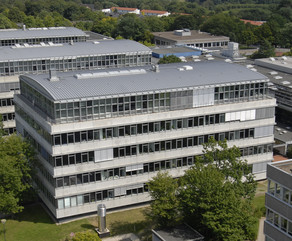The Influence of Green Infrastructure on the Urban Acoustic Environment
Study Objectives and Study Design
The project objective is to explore and investigate a broad range of urban and non-urban green infrastructure types to better understand the role of typological and structural factors of GI with regard to functional differentiation of acoustic environments. The work is embedded in basic research because to date the acoustic environment below noise has not been a consideration in spatial planning. Therefore systematic documentation of acoustic environments in non-human habitations where biophonic sound dominates is extremely sparse. We aim to shed light on this data gap in a highly populated European region and develop basic data than can be used for multiple purposes. First and foremost we aim to better understand the interplay between GI, non-human animal and plant populations, and the acoustic environment. Secondly we aim to understand how the acoustic environment is altered in natural biotopes along a gradient from a near natural ‘soundscape reference’ condition in isolated or remote areas to urban and peri-urban biotopes that form part of a city’s recreation network.
To achieve the project aims, we propose robust sound measurements in green infrastructure types across diverse landscape units, including a range of sizes and types of natural biotopes, recreation infrastructure, protected areas, and brownfields located within varying densities of urban fabric. Use of vegetation and non-human animal population data from LANUV and a range of ecoacoustic and SPL indices provide a critical comparative basis for sound outcomes across GI types.
Especially relevant is the identification of acoustic environments with a high proportion of biophony to anthrophony, or with quiet, high diversity and high fidelity acoustic environments in the Ruhr region that could be translated into practical benchmarks for high quality urban acoustic environments. The resultant dataset will enable spatial comparisons of a single highly populated region unlike any other sound datasets built in studies to date.
Die gesamte Projektbeschreibung finden Sie hier.
Details zum Projekt:
Projektdauer: Januar 2024 bis Dezember 2026
Ansprechpartner: Dr. Ing. Bryce T. Lawrence (bryce.lawrence(at)tu-dortmund.de), TU Dortmund, Fachbereich Raumplanung, Forschungsgruppe Landschaftsökologie und Landschaftsplanung
Förderer: Deutsche Forschungsgemeinschaft (DFG)








